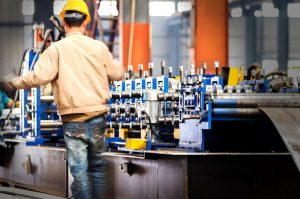Steel prices in China looking more vulnerable in the face of falling input costs
Unusually, the global steel market is diverging in the opposite direction from “normal.”
Historically, China would show signs of strength driven by robust construction activity while Europe and the U.S. struggled, facing more mature markets and relatively higher levels of foreign penetration.
The U.S. continues to power ahead. There, mill lead times remain stubbornly protracted.
Meanwhile, China is showing all kinds of uncertainty — much of it self-inflicted.
Receive the latest short-term and long-term outlook for the full range of industrial metals (base and ferrous) at the annual MetalMiner Forecasting Workshop on Aug. 25.
China’s emissions efforts
Although much was made of China’s ambitions to reduce emissions over the coming decade, after an initial flurry of anxiety the industry settled back to assume changes would be eased in gradually.
Indeed, Beijing even sought to play down the rate at which changes would be imposed following a sudden spike in prices as expectations of steel shortages took hold.
But over the last couple of weeks, it is becoming clear that cutbacks are happening. Output in the second half of the year is expected to be considerably less than the record first half.
Iron ore has taken a cue from both the message and the reality of cooling demand. Prices for 62% iron ore has dropped from the low 1,500s RMB/metric ton in early July to the mid-1,100s today on the Dalian exchange.
Nasdaq reported China is ramping up pressure on steel mills, particularly in top steel producer Hebei province. It aims to limit full-year production to no more than the 2020 volume in order to cut emission levels.
Authorities in the steel production hub of Tangshan city in Hebei province have issued an air quality control plan for the Beijing Winter Olympics in February, the post reports. That would entail imposing ultra-low emission standards across the steel and power sectors until March. Quoting from a Sinosteel Futures note, the report says, “The continued tightening of Hebei’s production limit means that the country’s crude steel production will fall more than previously expected.”
Chinese steel prices
Normally, if demand is strong and supply is constrained, we would expect prices to power higher. In that scenario, consumers would fight for material.
But while finished steel prices have held up, the reality is they are far from powering ahead. That suggests underlying demand is cooling.
It is still early for the seasonal slowdown that normally happens in November. Typically, construction demand weakens ahead of the winter. Of course, it is not too late for inventories to be run down and steel prices to rise. But with iron ore prices falling, those mills that find themselves less constrained by state emission controls will see their profitability improve and willingly fill the gap left by Hebei.
Lower input costs, though, will ease pressure on mills to increase prices. If demand is cooling faster than anticipated, finished steel prices could follow iron ore toward the end of the year.
Not what we are seeing in North America this year, but maybe a indication of what 2022 may have in store as post-COVID catchup is achieved.
Cut-to-length adders. Width and gauge adders. Coatings. Feel confident in knowing what you should be paying for metal with MetalMiner should-cost models.



Leave a Reply